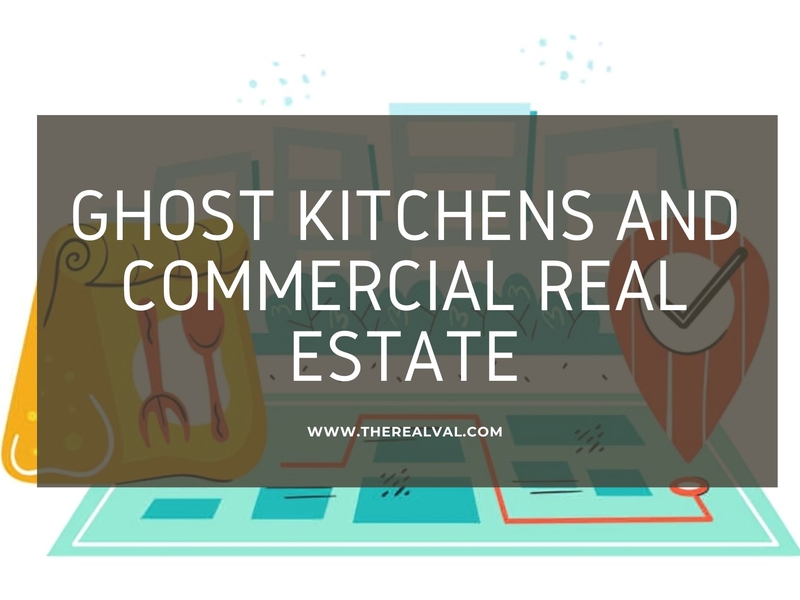The food industry is experiencing a major shake-up with the rise of ghost kitchens—also known as cloud kitchens or virtual kitchens. These delivery-only setups are redefining how we order and enjoy food, ditching the need for a physical storefront and focusing entirely on takeout and delivery.
This game-changing model is making waves not just in how we eat but also in the commercial real estate world. It’s opening up fresh opportunities for property owners and investors while throwing in some unique challenges to tackle. The future of food and real estate just got a whole lot more exciting!
What are Ghost Kitchens?
Ghost kitchens are commercial cooking spaces designed exclusively for delivery and takeout, with no traditional dining area in sight. Often hosting multiple brands under one roof, these kitchens let restaurateurs cut down on big expenses like rent and front-of-house staff.
The concept took off during the COVID-19 pandemic, as the demand for safe, convenient, off-premise dining skyrocketed. It’s a smart, cost-effective way to meet modern consumers’ cravings while adapting to a rapidly changing food landscape.
Key characteristics of Ghost Kitchens
- Delivery-Focused: These kitchens are all about delivery—no dine-in services, just meals prepared specifically for takeout.
- Cost-Effective: Lower start-up and operational costs, thanks to reduced real estate needs and no front-of-house staffing.
- Scalability: Flexibility to quickly adapt to trends, launch new brands, or tweak menus without breaking the bank.
What’s Driving the Boom in Ghost Kitchens?
- The On-Demand Economy: Food delivery apps like Uber Eats and DoorDash have made ordering in easier than ever. With consumers increasingly opting for convenience, delivery services are booming.
- Pandemic Adaptation: COVID-19 reshaped the dining industry. Ghost kitchens offered a lifeline for restaurants, allowing them to operate safely and meet the demand for off-premise dining.
- Urbanization and Space Constraints: Real estate is pricey in urban areas. Ghost kitchens, needing minimal space, are a perfect fit for bustling cities.
- Cost Efficiency: Lower overheads mean higher profit margins, giving operators the freedom to experiment with cuisines and concepts without massive financial risks.
- Innovation and Experimentation: Ghost kitchens double as culinary labs, where chefs can test new ideas in a low-risk setup. If something doesn’t click, it’s easy to pivot or try something new.
Impact on Commercial Real Estate
Ghost kitchens are reshaping the commercial real estate landscape in transformative ways:
- Repurposing Existing Spaces: With traditional restaurants facing high costs and lower foot traffic, many spaces are being converted into ghost kitchens. This shift helps landlords retain tenants while adapting to evolving market demands.
- New Development Opportunities: Developers are now eyeing properties perfect for ghost kitchen setups, such as warehouses, unused retail spaces, or even shipping containers. These flexible spaces cater perfectly to the delivery-only model.
- Changing Location Dynamics: The logistics of delivery are reshaping where commercial properties are developed. Proximity to densely populated areas and efficient access for delivery drivers are becoming key considerations for new projects.
- Potential Rent Adjustments: As more restaurant spaces become vacant, landlords may face pressure to lower rental rates. However, this creates opportunities to attract ghost kitchen operators with competitive pricing.
Benefits of Ghost Kitchens for Commercial Real Estate
- Lower Real Estate Costs: Ghost kitchens require less space than traditional restaurants, making them ideal for properties in more affordable areas. They can also be set up in unconventional spaces like warehouses or shipping containers, which often have lower rental costs than prime retail locations.
- Flexible Use of Space: These kitchens are highly adaptable and can utilize a variety of underutilized properties, from vacant retail units to parking lots. This flexibility allows landlords to repurpose spaces that might otherwise remain unoccupied.
- Increased Demand for Delivery Services: With the explosion of online food delivery, ghost kitchens meet the growing needs of this thriving market. Landlords can capitalize on this trend by attracting delivery-focused tenants, ensuring steady occupancy rates and potentially boosting ROI.
- Potential for Shorter Lease Terms: Ghost kitchens often prefer shorter leases, offering landlords more flexibility to adjust to market conditions or explore new tenant opportunities. This setup can be especially advantageous in uncertain economic climates.
- Attracting Diverse Tenants: Since ghost kitchens can host multiple brands under one roof, landlords can diversify their tenant mix without extensive renovations. This model not only stabilizes occupancy but can also enhance the property’s appeal and value by increasing activity in the area.
Challenges and Considerations
While ghost kitchens offer exciting opportunities, they come with their share of challenges:
- Intense Competition: As ghost kitchens grow in popularity, the market is becoming crowded, making it harder for individual operators to stand out and attract loyal customers.
- Regulatory Hurdles: Zoning laws and permitting requirements vary widely by location, often creating logistical and legal obstacles for operators. Navigating these regulations can be time-consuming and costly.
- Dependence on Delivery Platforms: Ghost kitchens rely heavily on delivery apps, which makes them vulnerable to changes in platform fees and policies, potentially impacting profitability.
- Challenges in Brand Building: Without a physical storefront, creating a strong brand identity can be tough. Operators need to invest in creative digital marketing and customer engagement strategies to build recognition and trust.
The Future of Ghost Kitchens
The outlook for ghost kitchens is promising, with continued growth and innovation on the horizon. As consumers increasingly prioritize convenience and online ordering, ghost kitchens are set to play a vital role in shaping the future of the food service industry. By addressing their challenges head-on, these kitchens have the potential to thrive and redefine how we experience dining.
The rise of ghost kitchens is unlocking exciting opportunities in the commercial real estate market. With their lower costs, flexible space requirements, and ability to meet the booming demand for delivery services, ghost kitchens are quickly becoming a key feature of urban landscapes across the U.S. Property owners who embrace this trend stand to gain through higher occupancy rates and more diverse income streams, making ghost kitchens a win-win for both operators and landlords.
Trending





